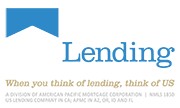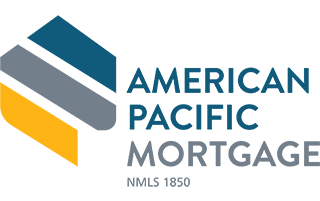What is an FHA Reverse Mortgage? How Does it Differ from Other Options?
For those who are over age 62, a number of financial options become available in the reverse mortgage arena, providing significant opportunities for reshaping one’s retirement. However, there’s a wide array of choices available today, including federally-designed programs. Deciding which program works better can be daunting. There actually is quite a difference, and some types of reverse mortgages will work better than others. So, don’t be fooled thinking the Federal Housing Authority or FHA reverse mortgage is the only viable selection available.
The FHA’s version of a reverse mortgage is formally known as the Home Equity Conversion Mortgage (HECM). There is no difference between the HECM and any other reverse mortgage. The HECM provides financing cash against the value of one’s home equity as a cash-out, and then the funds are paid back after the end of the term, a possible solution for retirees who want to boost their retirement cash flow. The difference appears in the details in terms of how the HECM works versus other types of reverse mortgages, as discussed below.
What is an FHA Reverse Mortgage?
The HECM, otherwise known as the FHA reverse mortgage, first appeared in 2009 as a new federal program. Specifically targeted to those 62 and older, the program essentially provided a federally-designed reverse mortgage tool for consumers versus any kind of private tool for the same purpose. The requirements are insured by partners with participation requirements. The lenders administer the program directly and gain profit from the interest earned on the loans issued. In return, the lenders that participate in the program are insured by the FHA in case a loan goes bad. It’s a win-win for both entities involved.
For consumers the HECM allows consumers to borrow against their home while still being able to stay in their residence and live comfortably for the duration of the loan period. The cash can then be used for a variety of purposes including everything from living support to travel to residence renovations, and is a particularly big benefit for those who are disabled.
Requirements for an FHA Reverse Mortgage
To get the HECM application approved, both partners or spouses need to be 62 or older as the application age requirement is based on the youngest of the two. The owners of the home must also have a large portion of equity in the home instead of being very leveraged. Finally, the borrowers also have to participate in related finance education and consumer counseling before the application can be approved and finalized.
What are the Other Types of Reverse Mortgages Available?
The HECM for equity liquidation alone is not the only tool available for a homeowner. Other reverse mortgage options include the:
- HECM for Purchase
- The Single-Purpose Reverse Mortgage, and
- Proprietary Reverse Mortgages
HECM for Purchase
Traditional reverse mortgages are limited to simply financing against an existing home already owned. The HECM purchase reverse mortgage benefit actually allows the applicant to move out of an existing home, change neighborhoods to a more favorable one, and all the while hold onto their own cash in the bank.
How it Differs from an FHA Loan
The HECM for Purchase choice has a big impact on equity. With the HECM program, by the time the loan is executed and completed, all of the equity one had in the original home could be completely liquidated when the loan has to be repaid. That practically means the leveraged home will be used to satisfy the loan in most cases. With the traditional reverse mortgage loan, the loan becomes due when the owner passes away or when he or she leaves it from full-time residence. That in turn could trigger a loan satisfaction, but there could still be plenty of equity left in the home itself.
The second big difference is that the HECM requires an initial investment. This investment, actually a down payment when the HECM is used for a purchase, can be significant (as much as 35 to 50 percent of a purchase price). There are, of course, other reverse mortgage choices available.
Single-purpose Reverse Mortgages
Typically provided by nonprofit agencies instead of the federal government and partner lenders, the single-purpose reverse mortgage is designed to help applicants deal with pre-approved activities. Home modifications and renovations for disabled retirees is a common example. Dealing with property taxes might be another common category that a reverse mortgage can be used to help keep people in their homes. The funding only utilizes a small amount of one’s home equity instead of large cash-out, funding just enough to get the project done and nothing else. Because of this design, the single-purpose alternative tends to be the least costly reverse mortgage choice available.
How it Differs from an FHA Loan
The single-purpose choice is, of course, far more restricted than an HECM choice. In that regard, the HECM provides far more flexibility. However, it will involve far more of one’s equity, and that in turn could result in the turn-over of the home at the end of the loan if it can’t be paid back. Because of the wide difference in choices, equity use and end results, the single-purpose alternative tends to be favored by lower income folks who don’t have a lot of equity but need help with their home or taxes.
Proprietary Reverse Mortgages
Those with high-value properties run into a problem where the HECM loan limitations don’t work for what they need. The HECM is capped at $679,650. For these folks the alternative of a proprietary reverse mortgage could work better, providing a greater amount of liquidity than the federal program would allow.
How it Differs from an FHA Loan
Clearly, the higher amount of liquidity allowed in equity conversion is a big difference of the proprietary reverse mortgage versus the HECM, but there are other differences as well. The proprietary choice is not insured by the FHA, increasing the risk, and that increases the interest rate cost involved to offset that risk for lenders. Another big difference is how the loan funding is distributed. Unlike the HECM model, the proprietary version pays out cash borrowed in a lump sum versus a monthly cash flow or multiple payments, requiring the borrower to manage the funds over the period of the loan in a personal bank account.
Which is Best?
There is no default reverse mortgage model that is best for all conditions, regardless of the situation. Every option has its advantages and disadvantages. It really depends on what the borrower needs in his or her specific case. Anyone who meets the age requirement should consider each option carefully, and discuss it with a qualified advisor. Then, with a full education on the alternatives available, pick the one that meets needs best. Only the homeowner is going to know what that really is for his or her situation.
*Reverse mortgages are loans offered to homeowners who are 62 or older who have equity in their homes. The loan programs allow borrowers to defer payment on the loans until they pass away, sell the home, or move out. Homeowners, however, remain responsible for the payment of taxes, insurance, maintenance, and other items. Nonpayment of these items can lead to a default under the loan terms and ultimate loss of the home. FHA insured reverse mortgages have an up front and ongoing cost; ask your loan officer for details. These materials are not from, nor approved by HUD, FHA, or any governing agency.
The views, articles, postings, and other information listed on this website are personal and do not necessarily represent the opinion or the position of American Pacific Mortgage Corporation or US Lending Company.
* For loan examples and more information visit our disclosure page at https://www.uslendingcompany.com/disclosures/





